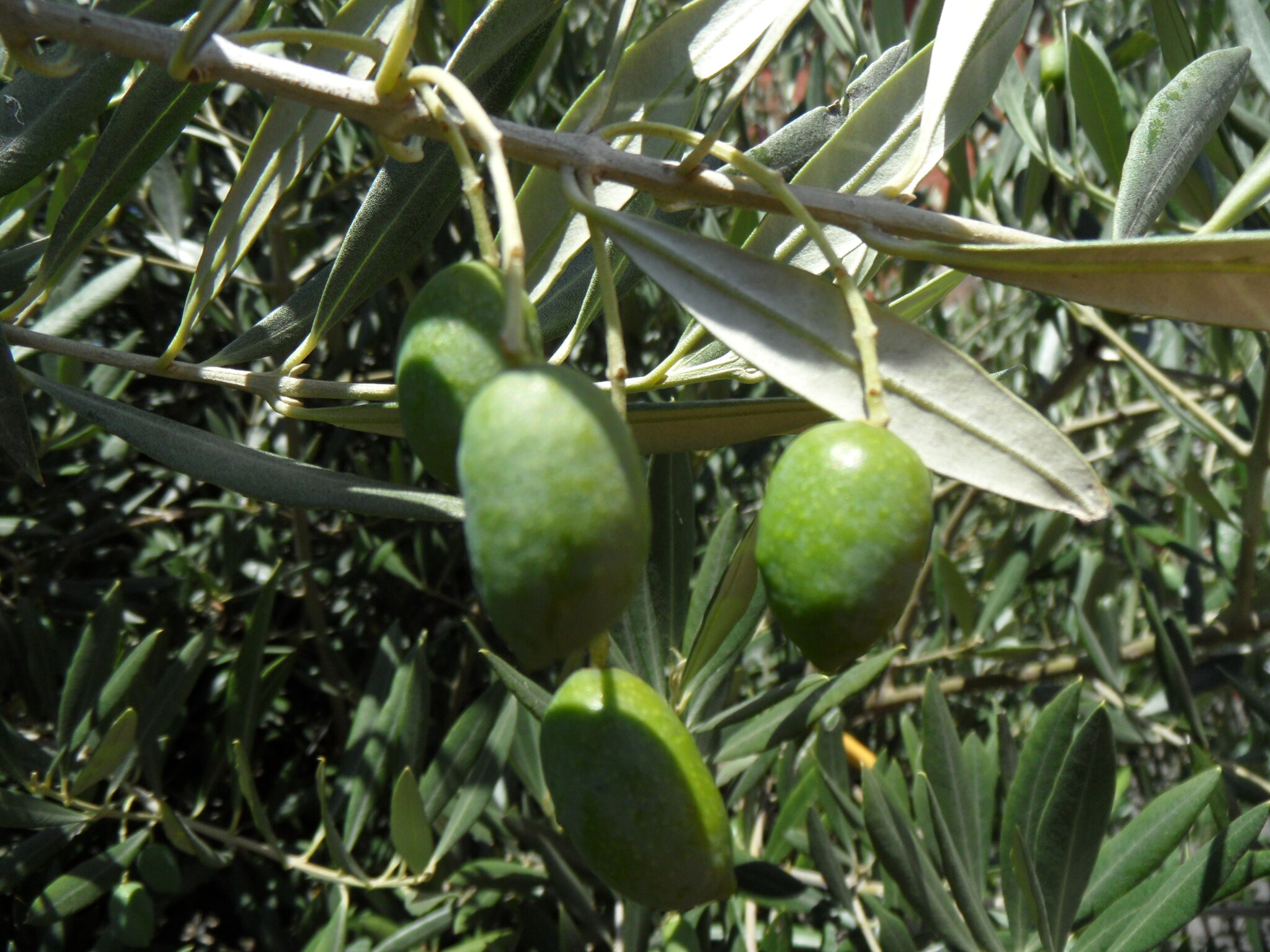
Greek elaia, classical name for the Olive.
Evergreen, sometimes thorny trees and shrubs. Leaves opposite, entire, rarely toothed, lower surface often with a dense covering of scales. Flower clusters in axillary, rarely terminal, clusters. Flowers usually bisexual with a short tube and 4 lobes, whitish. Sepals of 4 short teeth, persistent in fruit. Stamens 2, attached near the top of the tube, protruding. Ovaries 2-chambered, each chamber with 2 ovules. Fruit a mostly 1-seeded, ovoid to spherical drupe.
O. paniculata L., Native Olive, is occasionally offered; it is from dry or coastal rainforest of Qld, NSW, Lord Howe Island and New Caledonia and and has ovate to elliptic leaves. In nature it grows to 30 m or so tall.
The 'olive branch' is regarded as a symbol of peace and goodwill.
Softwood cuttings. Cultivars may be grafted or budded onto seedlings or rooted cuttings.
Leaves with silvery or golden scales below.
O. europaea bears the table olive that is also the source of oil. Some species are used as a source of timber.
About 20 species from tropical and warm temperate regions. Australia has 1 native species.
Green & Kapucha (1979).
Source: (2002). Oleaceae. In: . Horticultural Flora of South-eastern Australia. Volume 4. Flowering plants. Dicotyledons. Part 3. The identification of garden and cultivated plants. University of New South Wales Press.
